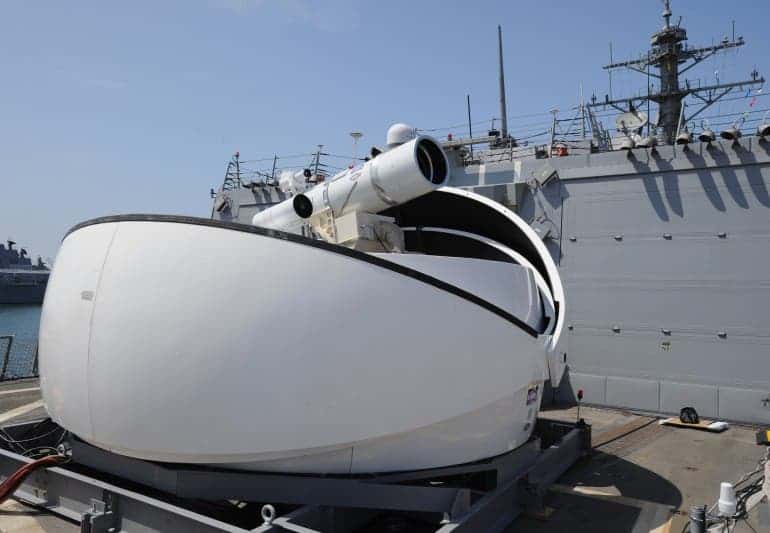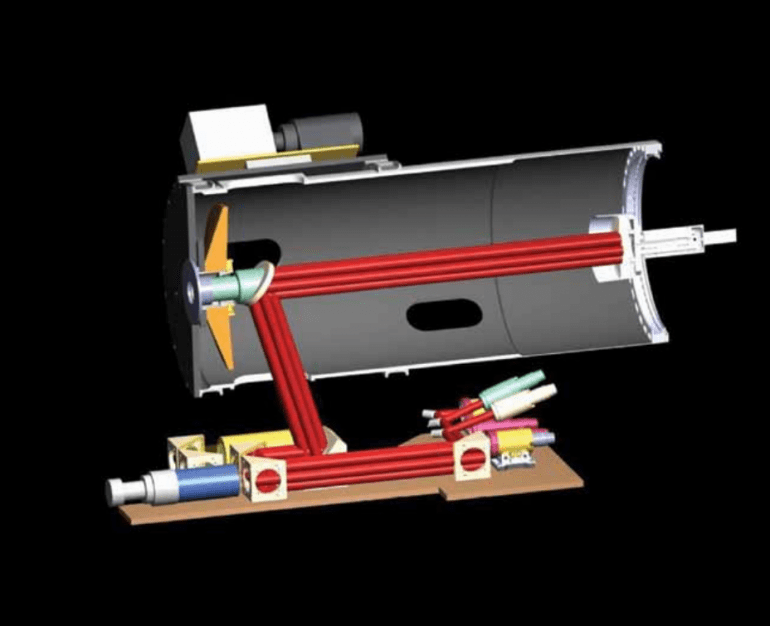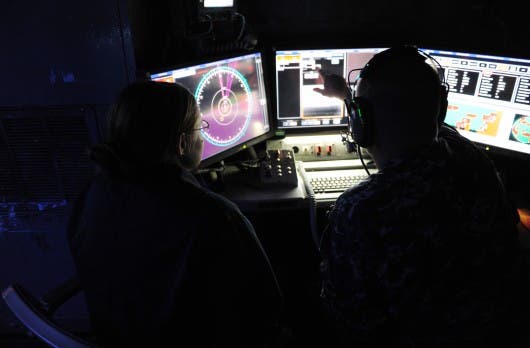Shells and bullets have evolved significantly in the past couple hundred years since they were first used, but in principle they’ve remained the same – discharge an explosive to propel a projectile. The 21st century might finally make way to a new class of widespread weaponry based on lasers. These are powerful, much more accurate than any explosive projectile and can work in virtually any weather conditions, as demonstrated by the US Navy’s latest deployment of the Laser Weapon System (LaWS).
The laser gun was test fired in a couple of rounds held from September to November aboard the USS Ponce (LPD-15) in the Arabian Gulf. In the video released to the public by the Navy, the laser can be seen destroying tiny targets placed far away on a moving attack boat and even a flying drone. Because of its tracking system, moving targets can be swiftly destroyed with pin-point accuracy. At 30 kilowatts or about 30 million times more powerful than your handheld pointer, this baby packs a punch! If you play on a Xbox or Playstation, with just a bit of additional training you could operate this laser yourself since a similar controller is used to operate it.
Because its power and mode of operation can be adjusted, not all targets necessarily need destroying. The LaWS can be used to dazzle pilots or enemy operators or deactivate sensors or other electric components, such as those found in an aircraft, without effectively destroying them. It’s also useful in tandem with conventional heat-seaking missiles, as the laser can be used to heat a target and make the infrared locking easier.
According to the navy, sailors working with the new weapon reported it worked “flawlessly, including in adverse weather conditions” and that it has exceeded expectations for reliability.” Officials were careful to note that this was not a test – the mounted laser is fully operational and battle ready. “If we have to defend that ship today, we will [use the laser] to destroy a threat that comes,” Rear Admiral Matthew Klunder, the chief of naval research, said in a press conference at the Pentagon on Wednesday.
Besides accuracy, another advantage of the LaWS is its cost. The cost of launching a missile from a destroyer can cost up to $2 million, while the flyway cost of the laser system is just the price of the electricity it takes to power the device – 59 cents per shot. It’s true that the laser cost $40 to put in operation, but because the USS Ponce is one of the oldest ships in the navy’s fleet, it had to come with a separate power source. If integrated inside a modern ship, the laser would power directly from its local grid significantly reducing costs. Also, since this is a prototype, costs could be scaled down when mass produced.
Of course, you still need missiles to sink enemy destroyers. A laser could do that too – you only need to ramp up the power. A 150-kilowatt version of the laser – five times as powerful as the one mounted on the Ponce – is currently in development.












